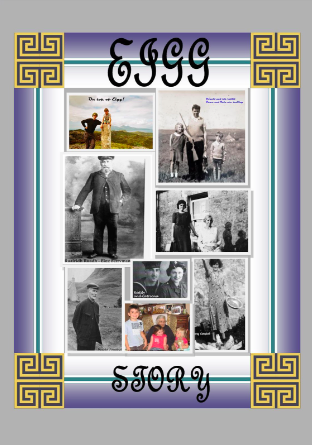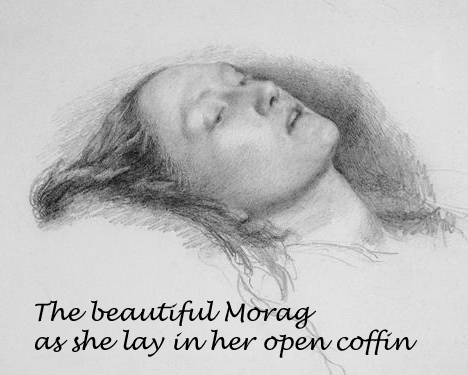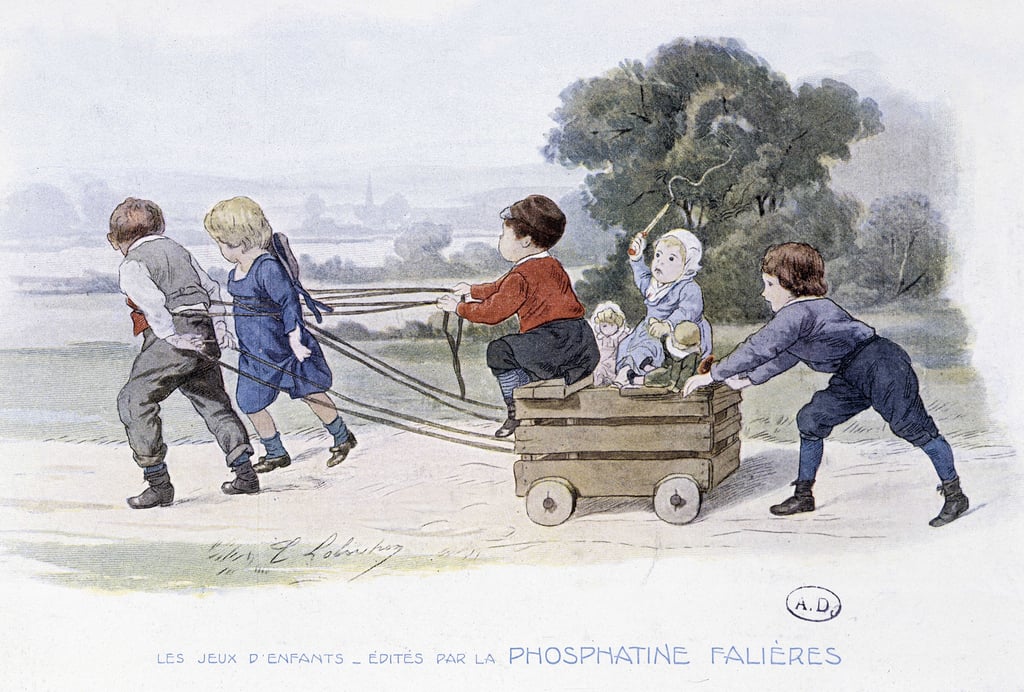
The Authors
As mentioned on the inside cover of this book, Isle of Eigg has been ‘written’ by my mother, Rhoda Caimbeul. More specifically, it is based to a great extent on her oral accounts, documents, and photos. You can read the full book version of it here.
I have also gained information by talking to relatives, such as my Auntie Violet (Violet Gibson, nee MacGillivray); my mother’s cousin, Katie McKinnon; and people who I met on the Isle of Eigg, such as Duncan Ferguson. In addition, my cousins, Dawn Driscoll and Ted Moyes, have sent me much useful information. Ted Moyes and his mother Flora Moyes have also constructed the MacGillivray family tree.
Apart from this, I have used ScotlandsPeople, and various books about Eigg, especially Camille Dressler’s “Eigg” (2007). See Bibliography for other books. The poet Rory McJoy has also made semi-fictional contributions. Rory McJoy is a pen name for two authors, Ruth Joy and Ewen Campbell, who have worked in collaboration on a number of semi-fictional stories in this book. Ly Solomon has also edited parts of the book and made contributions. She is also the editor of the online version of the book which can be read at https://macgillivray-culloden.com. Joanna Ramos also contributed to the story, “The Tale of Morag”.
What this book is about: A Rash Promise
More than 20 years ago, when I was visiting my mother at her house at Guildford, England, I was carefully flipping through the vintage pages of her scrapbook. My mother was an avid collector of family documents and photos, both useful and not so useful.
She would have made a great librarian! Each page showed our family’s memories in forms of photographs; documents; ration books from before, during and after the Second World War; and all kinds of paper memorabilia from over the last 100 years and more. There were photographs of our family, starting from when it was just my mum and dad with their own families; there’s also photos up to their early years of marriage, and up until our family slowly started to grow in numbers.
“You know, I’ve seen these so many times before and I still think they’re interesting. But it’s also tedious getting through it all! How were you able to keep doing this over the years!?”
“It just became a habit. Once you get used to it, taking pictures and keeping mementos just becomes a part of your life. But I wanted to do it more thoroughly and trace our family roots. I bought a ‘family history’ book and started doing it, but didn’t have the time to finish it.”
She took a book out of the bureau drawer and showed it to me. I opened it and saw that my mother had started to fill out the details of her parents’ births, marriage and deaths, but that it was far from complete. My mother hadn’t managed to fill out a lot in the ‘family history’ book, but she had certainly managed to keep all the paper memorabilia in her scrapbook, and in other albums and boxes! She was certainly the keeper of stories and memories of our family, and of people who time had already forgotten, yet they still remained alive on these pages and in the photographs.
I was quite impressed by her work, but didn’t say so as our ‘Scottish’ family tend to be rather stoic. But I thought that I too could give people ‘life’ – not through re-incarnation that my mother believed in, but through remembering. After all, if it wasn’t for our forbearers, we wouldn’t be here!
“I’ll do it!” I rashly announced.
“What?”
“I can finish the ‘family history’ book.”
At the time, I naively thought that this was something that could be done in a ‘jiffy’ – maybe on a free weekend! It has its advantages being a naive optimist, but it also has its drawbacks! Little did I realise at the time that making this rash promise on the spur of the moment twenty years and more ago would lead to never-ending ‘projects’. The stories ‘hidden’ in my mother’s paper memorabilia are never-ending!
Although I made the promise to my mother more than twenty years ago to finish the ‘Family History’ book, I still haven’t completely finished it (2024). However, I did finish writing the ‘first edition’ of a family history of my grandmother’s family on my mother’s side, The Isle of Eigg and the Story of Some of its People (2010).
I also thought that writing a ‘Family History’ would enable members of the wider family to have access to it. Moreover, in order to make the material accessible to other people it also made sense to digitize everything. This turned out to be another of those never-ending ‘done-in-a-jiffy’ jobs! The goal is to publish paper and electronic copies (on websites) of this new edition of Eigg and Some of its People. But this is an ongoing process (as of 2024).
This is done mainly for my own satisfaction, but also for anyone else who might be interested, such as members of my wider family. The advantage, of course, of publishing a ‘Family History’ electronically on a website is that other members of the family can contribute with further investigations and their own stories.
I realise now that I am still ‘stuck in the past’; that is, the idea that publications have to be ‘perfect’ and saleable, and accepted by a publisher. But such a way of thinking is just a brake on the whole process; so I will create ‘finished’ products, as well as ‘draft’ products, and make these available in paper and electronic versions at my own expense without being ‘censored’ by commercial publishers.


